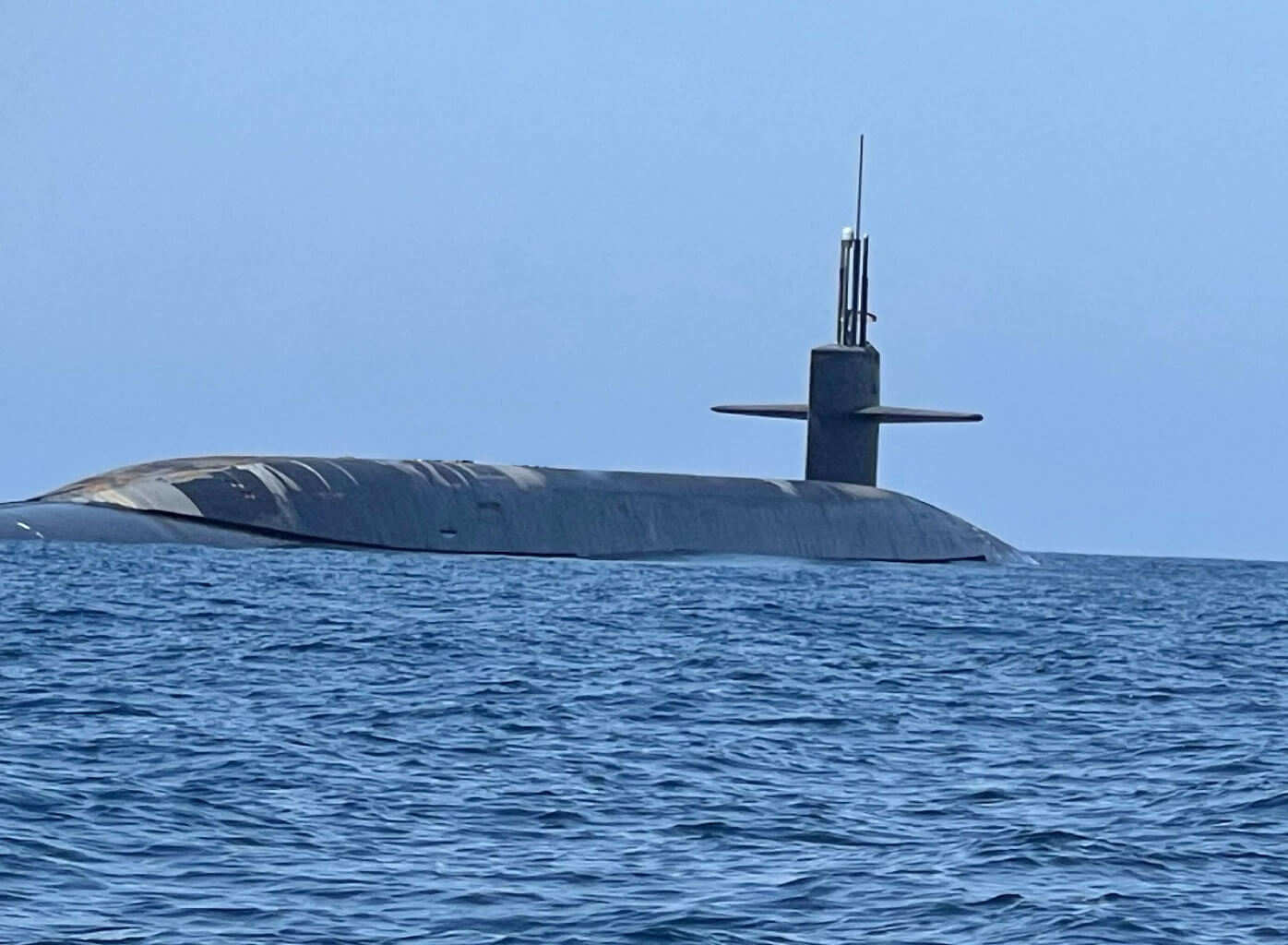Chinese researchers have made a promising discovery in submarine detection that has the potential to beat the US’s renowned submarine quieting technologies.
Researchers with the Chinese Academy of Sciences (CAS) Fujian Institute of Research on the Structure of Matter have found an ultra-sensitive magnetic detector that can pick up the faintest traces of the most advanced submarine from long distances away.
The findings by the team led by Zhou Shengnan, published in the peer-reviewed Journal of Ship Research (JSR), did note that the discovery is still in its nascent stage, and a lot of work remains to be undertaken. Nevertheless, it can challenge US dominance of the oceans by “(providing) a new solution for the detection and tracking of submarines.”
The paper is based on a computer scenario modeling to determine whether it “can be possible to detect the almost imperceptible bubbles produced by a nuclear-powered submarine cruising at high speed,” a South China Morning Post (SCMP) report said. “The development (threatens) US dominance of the oceans,” it said. Conventional submarine detection is conducted by studying two peculiar phenomena from the behavior of metallic objects underwater: ‘cavitation’ and ‘Magnetic Anomaly Detection (MAD).’
Cavitation
A submarine’s propellers and the hull form bubbles around them as blades rotate and the vessel moves through the water—cavitation resulting from a low-pressure area created around the trailing edges of the body and the blades.
The bubbles are left behind in the wake of the submarine and stranded in the high-pressure area of the deep ocean, where they ‘pop.’ Adversary navies try to ‘hear’ these ‘pops’ and gather the submarine’s location.
“The bubbles are an inevitable consequence of…the water flowing around the hull to move faster as its kinetic energy increases and its potential energy – expressed as pressure – decreases. This is because the total energy of a given system must remain constant.
In the case of a fluid in motion, the sum of the kinetic energy – caused by the motion of the fluid – and the potential energy will not alter, but the balance of the two forces will shift,” the SCMP report said. Cavitation usually occurs in areas with a sharp curvature or rough surface, which can create regions of low pressure. This is one way of detecting submarines.
Magnetic Anomaly Detection (MAD)
Another conventional technique is identifying ‘magnetic anomalies’ caused by a subsequent phenomenon of the bubbles themselves. Submarines are made mainly from ‘ferromagnetic materials’ like steel, so their presence in the Earth’s magnetic field will distort the field around them.
This is in addition to their inherent magnetic properties. Magnetic Anomaly Detection (MAD) was developed to detect submarines from overhead Anti-Submarine Warfare (ASW) aircraft that drop ‘sono buoys’ into the water to locate submarines.

New Technique
But the Chinese researchers discovered that the cavitation bubbles produce Extremely Low Frequency (ELF) signals in an artificial “electric field.”
“The researchers calculated that the extremely low frequency (ELF) signal could be stronger than the sensitivities of advanced magnetic anomaly detectors by three to six orders of magnitude,” SCMP said.
The paper added, “The magnitudes of the induced electric field and magnetic field are…well within the detection range of some top-notch sensors.”
As the water continues to flow around the hull, the bubbles grow bigger and move away from the surface, where the higher pressure – such as near the trailing edge of the hull – causes them to collapse violently.
This process causes turbulence and can produce an electromagnetic signature in a ‘magnetohydrodynamic (MHD)’ effect. The faster the turbulence, the stronger the MHD voltage. “Significant induced electric field signals can be observed around the bow, stern, and rear of the hull,” the paper said.
The ELF electromagnetic emissions produced by the cavitation bubbles generate a distinct signal from 49.94 Hertz (Hz) to 34.19 Hz. Though faint, ELF signals can travel great distances, penetrate water, and reach the ionosphere, reflecting back to the Earth’s surface.
Navies already exploit this characteristic to communicate with their submarines. China, for instance, has built the world’s giant antenna to transmit ELF signals to its submarines in deep waters. Thus, analyzing the strength and direction of the electromagnetic field helps determine the submarine’s location and movement.
‘Needs Work, Physics Too Complicated To Understand’
But the report added how traditional submarine tracking by identifying cavitation and magnetic anomalies has also been countered by building the submarine’s hull with low-magnetic or non-metallic materials or reducing the electromagnetic characteristics of the vessels.
Former DRDO scientist Dr. S. Guruprasad, who had headed the body’s Research and Development Establishment (R&DE) laboratory in Pune, too pointed out that cavitation due to propellers has been dramatically reduced.
“Submarines have become stealthier with effective noise reduction technologies. They are shaped for ‘laminar flow,’ and whatever sounds are created due to the flow being too weak to travel long distances. Flow-induced cavitation has long been addressed by submarine designers with effective experimental hydrodynamics and computer simulations,” Guruprasad said, speaking to EurAsian Times.
The report, too, “highly turbulent and unsteady” flow of water around the submarine, which can affect the formation of cavitation bubbles and the resulting electromagnetic signals.
The signals produced by cavitation may also be affected by or even disappear if the submarine slows down or stops or if there is interference from other sources like naturally occurring electromagnetic noise or human-made signals.
Therefore, the researchers suggested further research to understand the complex physics behind the hydrodynamics-electromagnetic coupling.
“Oceans are very vast, too large for any one set of sensors to detect even what is on the sea surface and much more difficult to detect beneath,” Guruprasad said, pointing to the crashed MH370 tragedy. Its floating debris was detected only after several months and multiple agencies working on the search and rescue.
- The author can be reached at satamp (at) gmail.com
- Follow EurAsian Times on Google News